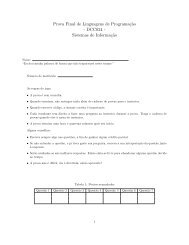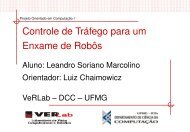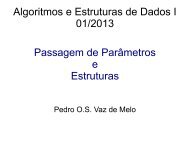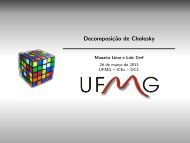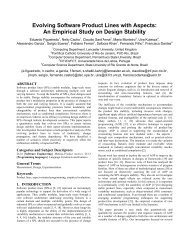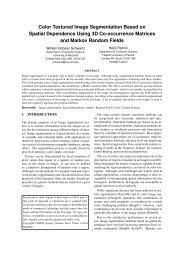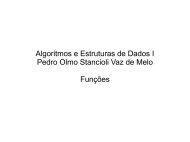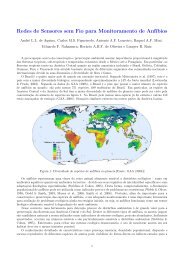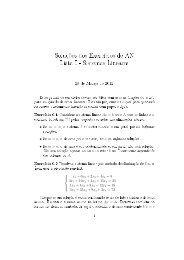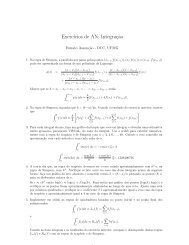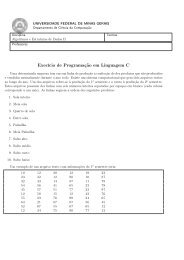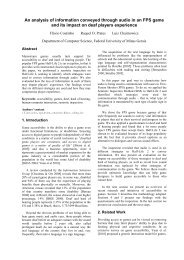Simple and Space-Efficient Minimal Perfect Hash Functions * - Liacs
Simple and Space-Efficient Minimal Perfect Hash Functions * - Liacs
Simple and Space-Efficient Minimal Perfect Hash Functions * - Liacs
You also want an ePaper? Increase the reach of your titles
YUMPU automatically turns print PDFs into web optimized ePapers that Google loves.
Ranking Step, which creates a data structure that allows us to compute the rank<br />
of any assigned vertex of V (Gr) in constant time.<br />
For the analysis, we assume that we have at our disposal r hash functions<br />
hi : U → [i m m<br />
r , (i + 1) r − 1], 0 ≤ i < r, which are independent <strong>and</strong> uniformly<br />
distributed function values. (This is the “uniform hashing” assumption,<br />
see Section 6 for justification.) The r functions <strong>and</strong> the set S define, in a natural<br />
way, a r<strong>and</strong>om r−partite hypergraph. We define Gr = Gr(h0, h1 . . . , hr−1)<br />
as the hypergraph with vertex set V (Gr) = [0, m − 1] <strong>and</strong> edge set E(Gr) =<br />
{{h0(x), h1(x), . . . , hr−1(x)} | x ∈ S}. For the Mapping Step to work, we need Gr<br />
to be simple <strong>and</strong> acyclic, i.e., Gr should not have multiple edges <strong>and</strong> cycles. This<br />
is h<strong>and</strong>led by choosing r new hash functions in the event that the Mapping Step<br />
fails. The PHF p : S → V (Gr) produced by the Assigning Step has the form<br />
p(x) = hi(x), where i = (g(h0(x)) + g(h1(x)) + · · · + g(hr−1(x))) mod r . (1)<br />
The function g : V (Gr) → {0, 1, . . ., r} is a labeling of the vertices of V (Gr). We<br />
will show how to choose the labeling such that p is 1-1 on S, given that Gr is<br />
acyclic. In addition, g(y) = r if <strong>and</strong> only if y is an assigned vertex, i.e., exactly<br />
when y ∈ p(S). This means that we get a MPHF for S as follows:<br />
h(x) = rank(p(x)) (2)<br />
where rank : V (Gr) → [0, n − 1] is a function defined as:<br />
rank(u) = |{v ∈ V (Gr) | v < u ∧ g(v) = r}|. (3)<br />
The Ranking Step produces a data structure that allows us to compute the rank<br />
function in constant time.<br />
Figure 1 presents a pseudo code for our family of minimal perfect hashing<br />
algorithms. If we omit the third step we will build PHFs with m = |V (Gr)|<br />
instead. We now describe each step in detail.<br />
procedure Generate (S , r , g , rankTable)<br />
Mapping (S , Gr , L);<br />
Assigning (Gr , L, g);<br />
Ranking (g , rankTable);<br />
3.1 Mapping Step<br />
Fig.1. Main steps of the family of algorithms<br />
The Mapping Step takes the key set S as input, where |S| = n, <strong>and</strong> creates an<br />
acyclic r<strong>and</strong>om hypergraph Gr <strong>and</strong> a list of edges L. We say that a hypergraph



